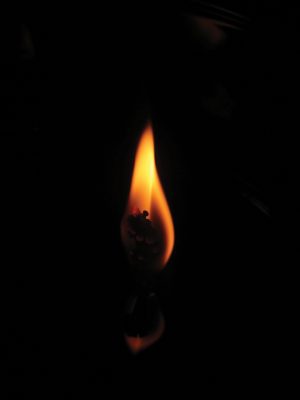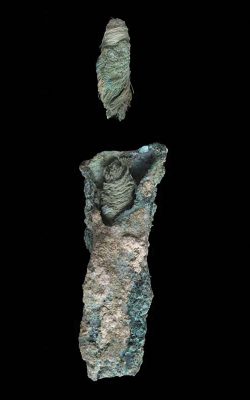×


We have detected your country as:
Please click here to go to the USA website or select another country from the dropdown list.
 An Israel Antiquities Authority (IAA) excavation at Shivta [an ancient city in the Negev] has discovered a unique wick used to light lamps, dated to the Byzantine period 1,500 years ago.
An Israel Antiquities Authority (IAA) excavation at Shivta [an ancient city in the Negev] has discovered a unique wick used to light lamps, dated to the Byzantine period 1,500 years ago.
Dr. Naama Sukenik of the IAA said, “It seems that this rare find was preserved thanks to the dry climate in the Negev…Lamps made of pottery or glass are often found in archaeological excavations, but to find a wick from ancient times is rare because they are made of organic fibers, which normally disintegrate quickly and disappear into the soil…[or] are usually consumed by fire.”
The wick was found in a small copper tube into which the wick was inserted when lit. Microscopic examination showed that the wick was made of linen, which comes from the flax plant. Linen is mentioned in the Mishnah (first written recording of Jewish tradition) as a high-quality material for wicks because it burns long and beautifully. The Mishnah also mentions other wicks made of lesser quality materials and therefore prohibited for use in Shabbat (Sabbath) lamps. Among these were fibers made from the plant named Sodom’s Apple, which grows in the Dead Sea area.
“Because flax doesn’t grow in the Negev, it probably came from farther north in the country through commerce,” Dr. Sukenik added. “The rare wick belongs to a type of glass lamp typical of the Byzantine period—a glass cup or bowl that was filled with oil and provided ample light, even after dark.
“Despite the tiny size of the wick…it sheds light on one of the most essential and common objects of antiquity, which has almost disappeared from the world, but survived at Shivta.”
Source: Excerpt from an article by Edgar Asher, Ashernet
All logos and trademarks in this site are property of their respective owner. All other materials are property of Bridges for Peace. Copyright © 2024.
Website Site Design by J-Town Internet Services Ltd. - Based in Jerusalem and Serving the World.